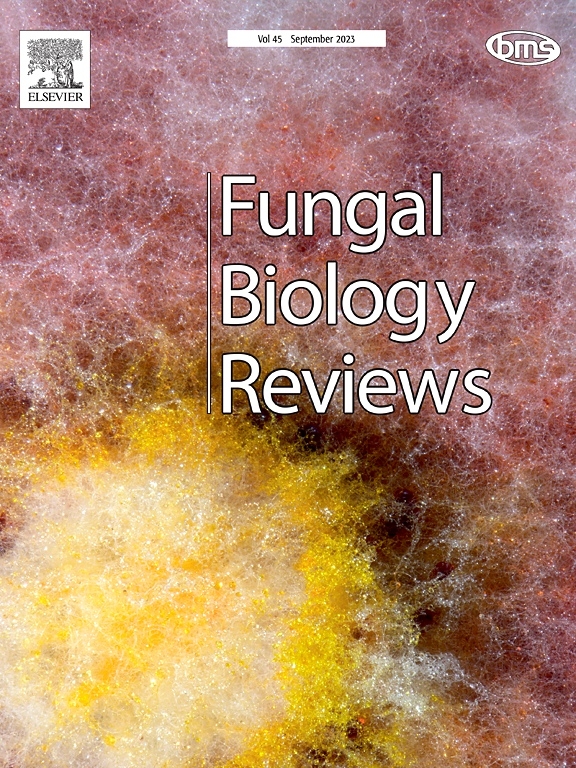A review of the current methods used to detect Phytophthora cinnamomi
IF 4.6
2区 生物学
Q1 MYCOLOGY
引用次数: 0
Abstract
Worldwide, Phytophthora cinnamomi is one of the most devastating plant pathogens. It infects almost 5000 plant species, causing death and habitat loss. There is a need for improved monitoring and management strategies to prevent the spread of this plant pathogen. The methods used for detection and identification have been established, but there are many variations depending on the species of Phytophthora, resources available, limitations of time and laboratory protocols, including previous knowledge or specialists involved. This review examined papers published from 2011 to 2025 that describe methods used to detect P. cinnamomi from environmental samples. Sixty-one papers were identified and included in this review. Collectively these papers showed that sampling approaches can include either direct sampling of soil, roots, plant tissue, and water, and indirect sampling by environmental baiting. Detection methods then can contain up to three main processes, including baiting, culture-based detection and isolation, and molecular confirmation. The sampling and detection methods identified in this review were used to develop a decision making flowchart that will help future researchers and management to choose the most appropriate methodological approach to identify P. cinnamomi from the environment. The flow chart presents methods based on laboratory time; resources available; and the type of sample collected. This information will increase the reliability of detection and improve the allocation of resources. This ultimately will improve the monitoring of P. cinnamomi to determine the spread of the pathogen, and to evaluate different management and control strategies to minimise its spread and impact on native vegetation, agriculture, forestry and horticulture.
肉桂疫霉检测方法综述
在世界范围内,肉桂疫霉是最具破坏性的植物病原体之一。它感染了近5000种植物,造成死亡和栖息地丧失。有必要改进监测和管理策略,以防止这种植物病原体的传播。用于检测和鉴定的方法已经建立,但根据疫霉菌的种类、可用资源、时间限制和实验室方案,包括以前的知识或所涉及的专家,有许多变化。本综述审查了2011年至2025年发表的论文,这些论文描述了从环境样本中检测肉桂假杆菌的方法。本综述共收录了61篇论文。总的来说,这些论文表明,采样方法可以包括土壤、根、植物组织和水的直接采样,也可以通过环境诱饵间接采样。检测方法可包含多达三个主要过程,包括诱饵、基于培养的检测和分离以及分子确认。本综述中确定的采样和检测方法用于制定决策流程图,以帮助未来的研究人员和管理人员选择最合适的方法从环境中鉴定肉桂假单胞菌。流程图给出了基于实验室时间的方法;可用资源;以及采集样本的类型。这些信息将提高检测的可靠性,并改善资源的分配。这最终将改善对肉桂线虫的监测,以确定病原体的传播,并评估不同的管理和控制策略,以尽量减少其传播和对本地植被、农业、林业和园艺的影响。
本文章由计算机程序翻译,如有差异,请以英文原文为准。
求助全文
约1分钟内获得全文
求助全文
来源期刊

Fungal Biology Reviews
MYCOLOGY-
CiteScore
10.60
自引率
0.00%
发文量
36
期刊介绍:
Fungal Biology Reviews is an international reviews journal, owned by the British Mycological Society. Its objective is to provide a forum for high quality review articles within fungal biology. It covers all fields of fungal biology, whether fundamental or applied, including fungal diversity, ecology, evolution, physiology and ecophysiology, biochemistry, genetics and molecular biology, cell biology, interactions (symbiosis, pathogenesis etc), environmental aspects, biotechnology and taxonomy. It considers aspects of all organisms historically or recently recognized as fungi, including lichen-fungi, microsporidia, oomycetes, slime moulds, stramenopiles, and yeasts.
 求助内容:
求助内容: 应助结果提醒方式:
应助结果提醒方式:


